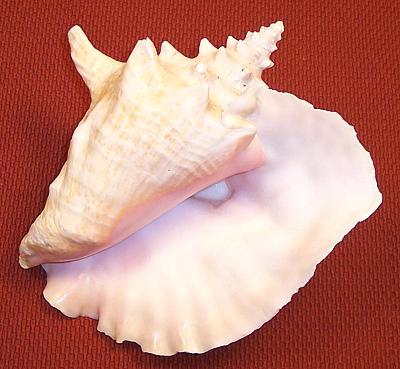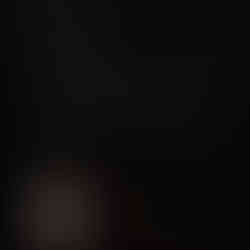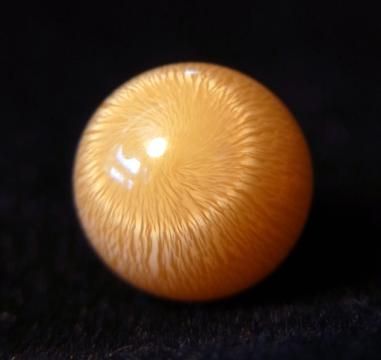Unique Pearls To Collect
- Nabilah Ghani
- Apr 9, 2021
- 10 min read
Did you know that there are other unique pearls on the market? Interestingly, these pearls have a unique formation process as compared to the traditional pearls. This makes them rare and more valuable because of their natural grown process. Unique pearls such as the Quahog, Conch and Melo pearls are one of unique pearls that are found in the ocean.
Natural Grown pearls
Natural pearls refer to pearls that are formed naturally in the oyster with no manipulation or man-made approach. These pearls are usually rare and more expensive compared to cultured pearls. Research has shown that the formation of a pearl happens when there is an irritant, parasite or molecule that enters the soft body tissue of the oyster's mollusc. In defence, these oysters will build a defense mechanism to protect themselves from the substance that enters its body. Natural pearls are rare as these oysters' mollusc acts like a filter and would usually get the irritant that has built up as pearl out of the body. Thus Natural pearl is a type of pearl that seems as rare to find.

Image Courtesy: Town&country
Cultured Grown Pearls
Unlike Natural pearls, Cultured pearls are farmed through a man-made approach therefore they are usually cheaper. The process begins as simple as acquiring the tissue graft inside the Oyster's mollusc. The farmer's technician will then cut the tissue graft into pieces before inserting them back to the Oyster's shell and setting them to grow for the next 2-3 years. Cutting the tissue graft requires an extensive amount of skill, as one wrong move will cause no production of pearls. Hence this process is usually economical and cheaper.

Image Courtesy: Venus-tears
Saltwater VS Freshwater
There are two types of environment in which pearls can grow in. South sea pearls, Akoya and Tahitian are formed in the ocean. These pearls are better in quality, lustre and overtones. They are originated from countries like Australia, Tahiti and Indonesia. Freshwater pearls are grown in lakes or rivers. Mussels are also known to produce freshwater pearls. Freshwater pearls have less lustre, not as large and are less appealing. Typically, they are found in countries like China, Australia, India and United States. In comparison, saltwater pearls are much more expensive than freshwater pearls because of their differences in quality and type of pearls. Yet freshwater pearls are more durable and affordable than saltwater hence it is often seen in the market.
Image Courtesy: GIA Image Courtesy: GIA
non-nacreous pearl VS nacreous pearl
As shown in the diagram below, pearls are categorised into two groups which are nacreous and non-nacreous pearls. Knowing the differences between these two categories is important, as it will raise awareness of the factors that made these pearl valuable. Nacreous pearls are the traditional pearl such as South sea pearls, Freshwater, Akoya and Tahitian. They are graded through their lustre, size, shape, colour and complexion while non-nacreous unique pearls are pearls like Quahog, Conch and Melo. Non-nacreous pearls are graded through their colour, shape, size, porcelaneous and flame-like structure. The nacreous pearl formation process is mostly made up of aragonite and a little calcite. (note: aragonite and calcite from Calcium carbonate compound. Aragonite and calcite have a unique crystalline structure, which means they reflect and refract light differently) this influences the lustre of the pearl. Non-nacreous pearls are made up of mostly calcite which has a lower lustre compared to aragonite. Therefore, this explains the two different categories of pearl.

Image Courtesy: Assel
Quahog pearls
Quahog pearls are non-nacreous pearls that are grown in Mercenaria in sea salt clam, known as M.mercenaria. It is found on the Atlantic coast of North America. The shell of quahog pearls exhibits a mixture colour of uneven white, purple to mauve. Quahog pearls are found in a variety of colours like white to brown and from faint pinkish-purple to dark purple. Farmers in agriculture cultivate Quahog pearls. Despite being in agriculture, it remains rare because of the use of mechanized harvesting method. One wrong move will destroy all the other pearls. Thus only 1 out of 5000 clams will form the Unique pearl.
Image Courtesy: eretzelana Image Courtesy: GIA/Robert Weldon.
How are quahog pearl formed?
Quahog clam is known as M.mercenaria bivalves, Bivalves refers to soft body creatures that have two shells connected at a hinge. Similar to traditional pearls when an irritant or parasite enters the clam, its defence mechanism will be activated, hence forming a concrete-like structure surrounding the irritant which then builds up as a pearl. During the pearl's formation process, there will be the involvement of aragonite and calcite. The finishing of Quahog pearl is porcelain this is because of the influence of calcite.
GOLASH BROOCH
The Golash brooch is named after its discoverer Alan Golash. They set the gold brooch with the largest Quahog pearl measuring 14 mm diameter. In 2005, the brooch was discovered at an antique store where it is mistakenly acquired for 14 USD. In 1835 the suspended Quahog pearl was attached to black and white enamel in high-quality karat gold. It is known to be touring around the world from 2001 to 2008 until 2009, which was displayed in the auction house. The pearl was given a name known as the pearl of venus.It officially has an owner now however the owner chooses not to disclose the value of the Quahog pearl.

Image Courtesy of Antoinette Matlins
Quahog value, colour, shape and size
One of the Quahog pearl weighing 16.64 carats in Los Angeles was sold at an estimated value of $20 000 - $30 000 in 2016. The vivid purple hue pearl exhibits outstanding porcelaneous lustre. An analysis shows that only 100 000 Quahog clams can produce an attractive pearl to be used in jewellery. In the auction house, only a few Quahog get to be displayed. This is because they rarely find spherical and purple Quahog pearls only button shape with flat bases. Below is an example of the Quahog pearls with different colour variations. The ones with cream, white and brown colour are from different species of clam but with the same genus named M.campechiensis which is known as Southern Quahog.
Image Courtesy: GGTL-lab Image Courtesy: GGTL-lab
It is rare to find a perfect circle purple which is known as the Northern Quahog pearl thus the one with a spherical shape with purple colour is valuable. In terms of size, quahog pearls are usually 5-6mm in diameter. Quahog pearls can go up to 14 mm in size, which is large for the unique pearl. In terms of weights, it usually weighs approximately 13.5 carats.
The Quahog pearl that is sold at an estimated price of Image Courtesy: GIA
$20,000-$30,000
Image Courtesy: Nationaljeweler
Conch Pearls
What is Conch Pearls and why it is considered unique pearls? Conch pearls are pearls that are originated from Conch Queen shells and are rare. These pearls are usually in white, pink, yellow, brown, golden and different shades of pink. They are known to be used in the Victorian era for carving. Conch pearls are found in tropical waters of the Caribbean in Bermuda. Unlike other pearls, conch pearls are rare. This is because of Conch Queen's nature as a gastropod mollusc, a single shell with no hinge, hence it's much tougher for an irritant to pass through the mollusc. (Mollusc are organism that has soft body tissues) There was an abundance of queen conch in the Florida keys until it involved fishing in the 1970s, which caused it to be illegal to catch these queen conch, be it for recreational or commercial purpose.
Image Courtesy: Molluskscience Image Courtesy: Clovegarden
How do conch pearls formed?
Conch pearl derived when an irritant or substance enters the shell of the Queen Conch. It is formed with the presence of calcareous substance such as calcite or aragonite. The defence mechanism of the Queen Conch is to build layers of fibrous crystals around the irritant, which then cause the conch pearl to form. The process is similar to how kidney stones grow inside human. It is rare to find the size of conch pearl that exceed 2-3 mm and weighs not over 10 carats.


Image Courtesy : Theeysofjewelry Image Courtesy : Theeysofjewelry

Image Courtesy: Langantiques
Largest Conch Pearls
The discovery of the largest conch pearl-like is made into a Necklace. Henry Walters, a known art collector, bought the necklace from Tiffany and CO for his niece in 1905. The Conch pearl piece weighs approximately 123.5o carats, which is one of the largest piece known in history. The Conch pearl necklace now becomes one of Walters Art Museum exhibit in Baltimore, United States. Another largest discovery of the unique pearl is the baroque pink Conch pearl, which is set into a ring. It is one of David Morris's buy, which weighs 44.55 carats. David Morris is known as an exclusive jeweller in London.
Image Courtesy: Thejewelleryeditor Image Courtesy: Thejewelleryeditor
Conch pearls value, shape and sizes
Below is the screenshot of the conch pearl ring on Sotheby's website, which is set with brilliance diamond. The Conch pearl is measured approximately 12.12 x 8.54 x 7.82mm to 10.02 x 6.37 x 6.29mm The price of the ring is estimated to be sold at 277,200 HKD, which is estimated to be about $47 687 Singapore dollars.

Image Courtesy: Sothebys
Flame like Structure
Unlike nacreous pearls, which are evaluated by their lustre, non-nacreous pearls are valued for their flame-like structure. A flame-like structure is formed because of the intersection of calcite and aragonite. These flames are usually visible to a human's naked eye hence non-nacreous pearls are graded not only by their shapes and sizes but through their flame-like structure too.

Image Courtesy: Karipearls
Melo
Melo pearls are formed in one of the sea creature called the Melo Melo snail. Melo Melo snail produces Melo pearl, which is one of the unique pearl known in the market. Melo pearls are found in colours like brown, yellow and orange. Vivid Orange pearl is considered being the most expensive and rare. Melo snail populates in countries like the South China Sea, Thailand and Myanmar. Melo Melo snail is known to be a gastropod mollusc with a single shell hence it's much harder for irritant to enter. Melo pearls are rare as it is grown naturally and sometimes takes decades to grow a pearl, unlike the other cultured pearl.

Image Courtesy: Wildlifesingapore
How do conch pearls formed ?
Melo pearls undergo the same process as conch pearls. It starts when an irritant breakthrough the shell and enters. The non-nacreous pearl will go through a similar process such as calcite and aragonite, just like the one mention in the formation of the Conch pearls process.

Image Courtesy: Pearlwise
Melo Pearl collections
One of Tiffany and Co's 2021 collection is a pendant made of Melo pearl and diamond. The pendant is named colours of natural gold. The orange Melo pearl weighs 94 carats with 24 carats of diamonds. It is known that the Melo pearl takes decades to grow naturally in the large gastropod mollusc of the Melo snail. It is also known that only 1 per cent possess such quality of flame-like the Melo pearl in the colour of nature pendant. On the right, the collection is named The Magnificent Melo pearl necklace it was owned by 1stDIBS jewellery that was sold at an estimated price of AUS 113 000 ($115,568.49). The Melo pearl is one of the unique pearls that follows a pear shape. The Magnificent Melo pearl weighs about 39 carats with 18 pink conch pearl of about 16 carats and diamonds. These two pearls jewellery produce an excellent structure of flame, thus the price reflects its shape and quality too.
Image Courtesy: Town&country / Tiffanyandco Image Courtesy: 1STDIBS
Melo pearl value, shape and sizes.
Melo pearls are cheaper than Conch pearl. However, at Christie's auction website the price of Melo pearl with a carat weight of 130.31 carats, measuring approximately 25.30 - 26.70 mm is estimated to cost around CHF 70 000- CHF 80 000 swiss francs ($100 000) that is about CHF 615 swiss francs per carat ($889) which is half the price stated. The shape of Melo pearls is usually a circle unlike the conch pearl, which can be found in irregular shapes. However, it is still possible to find Melo pearl in irregular shapes like baroque or oval, but if found it would be a unique pearl discovery.

Screenshot of Christie's Melo pearl price
Image Courtesy: Christie
durability and Luster of Melo pearl
Melo pearls are durable compared to other traditional pearls. Its durability is ranked at 5 hence, Melo pearl is known to be able to last for a long period if it is well taken care of. Melo pearl has a porcelaneous lustre, which made it smooth and reflective. However, over time the lustre can decrease.it is still possible to bring back the lustre by polishing the unique pearl.

Image Courtesy: Blufashion
Flame like structure
Similar to the conch pearls, the flame-like structure of the Melo pearl is important, as it will determine the
value. It is known that Melo pearls with the excellent flame structure are known to be more valuable. As Melo pearls are quite reflective, when it is held at a different angle, cat's eye effect will appear.
Image Courtesy: Pinterest/wnytergem Image Courtesy: PearlGuide
Conclusion
In conclusion, these pearls are finite resources, and humans are responsible to take care and preserve these creatures from extinction. Imagine taking so much from nature only to abandon them at the end. Nature always has its ways to create its magic, and it is only up to us to appreciate and nurture it.
Source:































